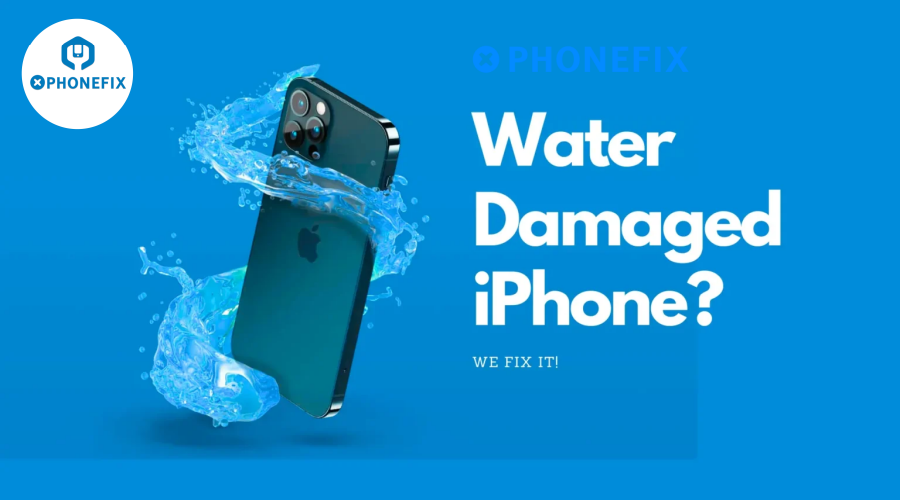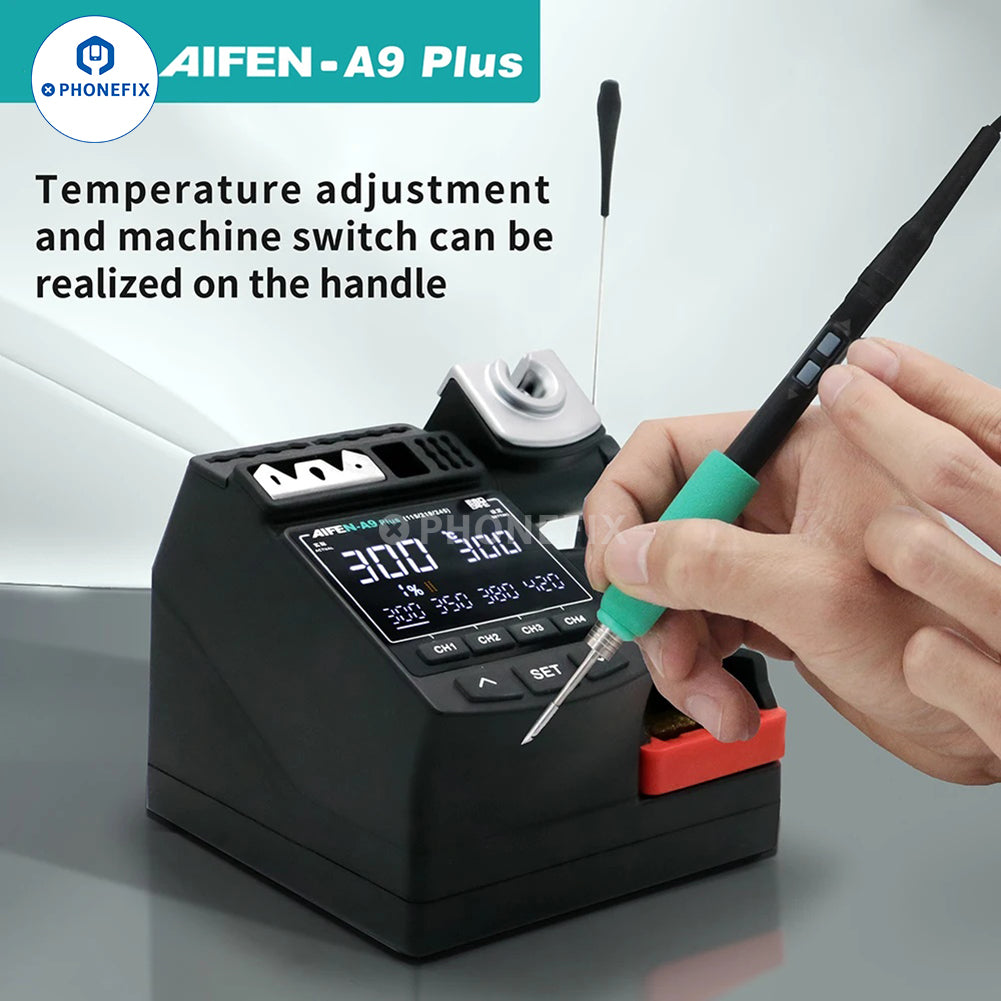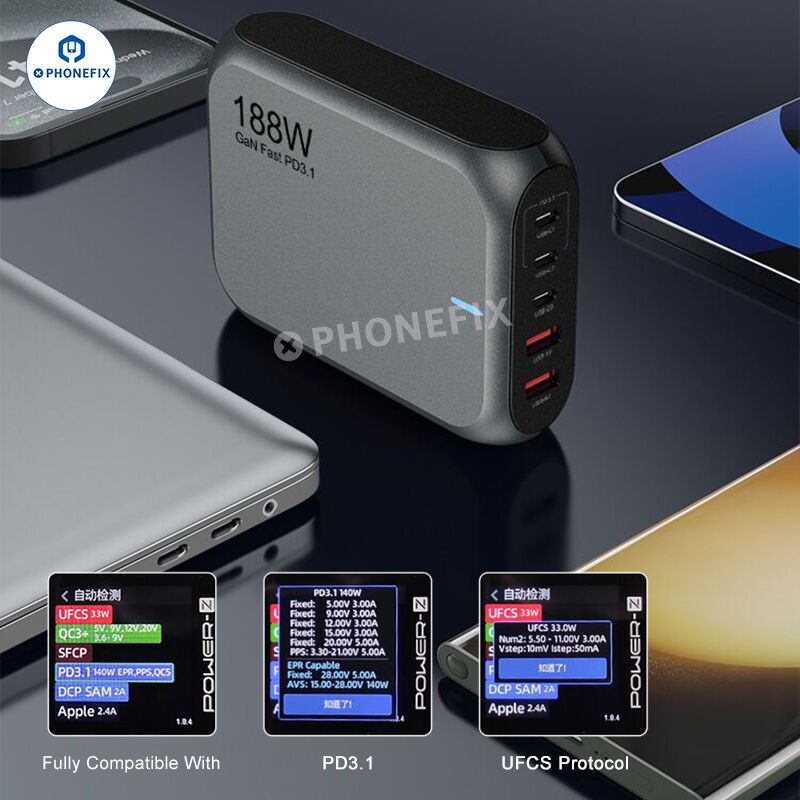Water damage is one of the most common issues faced by iPhone users. Whether it's accidental spills, a drop in the sink, or being caught in the rain, water can cause significant harm to your device. Fortunately, with the right tools and techniques, you can repair a water-damaged iPhone and restore its functionality. In this guide, Phonefix will walk you through the essential tools and tips needed for an effective repair process.
1. Understanding Water Damage in iPhones
Water damage occurs when moisture infiltrates the internal components of an iPhone, causing corrosion, short circuits, or even complete failure of critical hardware. The severity of water damage depends on several factors, including the extent of exposure, the device’s water resistance level, and how quickly it’s addressed.
Key Signs of Water Damage:
-
Liquid Contact Indicator (LCI): A small sticker inside the SIM card slot that turns red if the device has been exposed to water.
-
Visible Corrosion: Corroded connectors or a fuzzy, grainy appearance on the motherboard.
-
Performance Issues: Unresponsive buttons, unrecognizable touch input, or the device not powering on.
Addressing water damage early can prevent these issues from worsening and potentially save your device from permanent failure.
2. Essential Tools for Water Damage Repair
To successfully repair a water-damaged iPhone, you'll need specific tools that are designed for delicate work. Here are the must-have tools for any iPhone water damage repair:
2UUL Torque Screwdriver Set
-
Purpose: The 2UUL Torque Screwdriver is a basic tool designed for mobile phone repairs. It provides precise torque control and is suitable for removing screws from devices such as iPhones. Compared with traditional Pentalobe screwdrivers, this tool can better ensure that you apply appropriate pressure to the screws during removal to avoid damaging the screws or the motherboard.

-
Tip: Ensure you have the correct size screwdriver for your iPhone model to avoid damaging the screws.
Plastic Pry Tools
-
Purpose: Plastic Pry Tools are used to gently open the iPhone's casing without damaging the screen or internal components.

-
Tip: Using plastic tools instead of metal is crucial as it reduces the risk of short-circuiting the internal electronics or scratching the surface.
Liquid alcohol bottle
-
Purpose: This bottle of liquid alcohol is designed for mobile phone repair and is often used to clean internal components and remove moisture, corrosion and minerals. Liquid alcohol has a good cleaning effect on corrosion and water stains on circuit boards.

-
Tip: When using, make sure the amount of liquid alcohol is moderate and avoid excessive use to prevent overflow and damage to other components. The design of the alcohol bottle makes it easy to accurately pour out the required amount of alcohol.
Ultrasonic Cleaner
-
Purpose: An ultrasonic cleaner uses high-frequency sound waves to remove impurities, water, and corrosion from the motherboard and other small parts.

-
Tip: If you don’t have access to an ultrasonic cleaner, at least soak the small parts in isopropyl alcohol for a thorough cleaning.
Dehumidifier or Silica Gel Packs
-
Purpose: These tools are used to absorb moisture from inside the device after it has been disassembled.
-
Tip: Place the phone in a dehumidifying environment (or in a sealed bag with silica gel packs) for 24–48 hours to ensure it is thoroughly dried.
Precision Tweezers
-
Purpose: Precision tweezers help you carefully handle delicate internal components, such as connectors and cables, during the disassembly and reassembly process.
- Tip: Make sure the tweezers are non-magnetic to avoid accidentally damaging or short-circuiting sensitive components.
3. Tips for Effective Water Damage Repair
When repairing a water-damaged iPhone, following these tips will help ensure a successful restoration:
Power Off and Disassemble Immediately
-
Why It's Important: As soon as you notice water damage, power off the device immediately. This step is critical to prevent short circuits that could further damage internal components.
-
Tip: Use the screwdriver to carefully remove the screws, then gently pry open the casing with a plastic pry tool. Make sure to note the positions of the screws, as iPhone screws may vary in size depending on the model.
Thorough Drying and Cleaning
-
Why It's Important: Moisture and corrosion are the primary culprits of long-term damage. Drying out the device and cleaning the internal components properly is essential to restoring functionality.
-
Tip: Soak the motherboard in alcohol and gently clean it with a soft brush to remove any remaining water or corrosion. If you have access to an ultrasonic cleaner, use it to thoroughly clean small parts like connectors and the logic board.
Avoid Excessive Heat
-
Why It's Important: Applying direct heat (like using a blow dryer) can cause internal components to warp, melt, or further damage the delicate parts of the iPhone.
-
Tip: Let the iPhone air dry in a safe, cool place, or use a dehumidifier. Never expose the device to direct sunlight or hot air.
Handle Delicate Parts Carefully
-
Why It's Important: iPhones have small, fragile components that can easily be damaged during repair.
-
Tip: Use precision tweezers to handle small parts like screws, connectors, and ribbon cables. When prying open the device, use a plastic pry tool instead of a metal one to prevent damaging the screen or internal circuits.
Thoroughly Test the Device
-
Why It's Important: After the phone has been dried and reassembled, it's essential to check its functionality thoroughly to ensure the repair was successful.
-
Tip: Test the screen, touchscreen, camera, charging port, microphone, speakers, and any other features that could have been affected by the water damage. If any components are still malfunctioning, consider disassembling the phone again and checking for missed issues.
4. How to Avoid Future Water Damage
Preventing water damage in the future is just as important as repairing it. Here are some tips to help protect your iPhone:
-
Use Waterproof Cases: Invest in a high-quality waterproof case that offers better protection against accidental submersion.

-
Be Cautious in Wet Environments: Avoid using your iPhone in places with high humidity, such as bathrooms or near swimming pools.
-
Keep an Eye on Water Resistance: iPhones from the iPhone 7 and newer models have an IP67 or IP68 rating, meaning they are water-resistant to certain depths and durations. However, this doesn’t make them completely waterproof. Regular exposure to water can weaken the water resistance over time.
Conclusion
Repairing a water-damaged iPhone requires precision tools and expertise. Phonefix offers high-quality phone repair kit, including repair phone tools and phone repair parts, to ensure safe disassembly and reassembly. With the right tools and precautions, you can effectively restore your iPhone's functionality.












